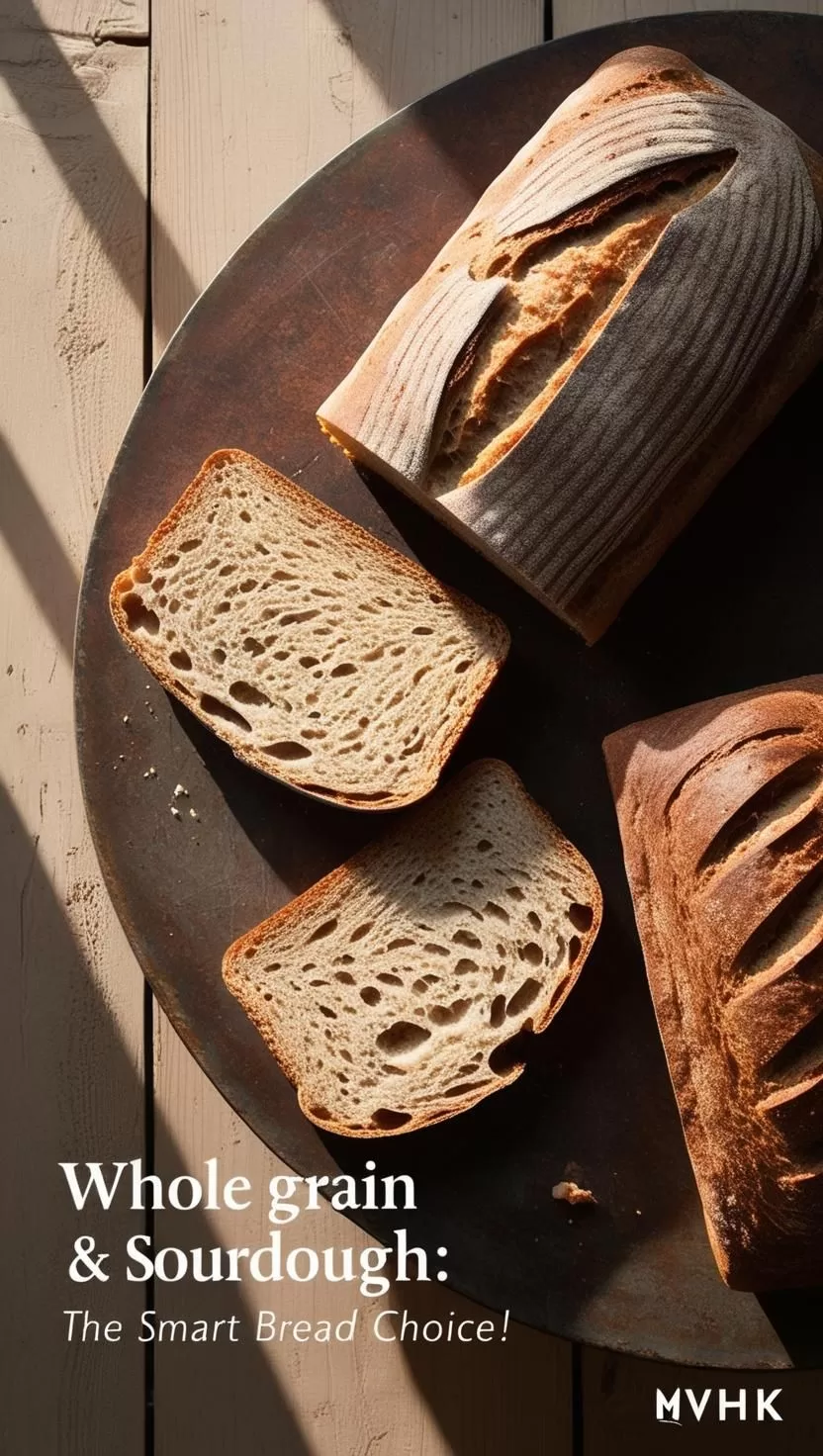The Truth About Bread: Whole Grain & Sourdough Benefits
For years, bread has been demonized as an unhealthy carb source. You’ve probably heard claims like “All bread is bad for you!”—but is that really true? The reality is that not all bread is created equal. Whole grain and sourdough bread offer significant health benefits, including fiber, essential vitamins, and minerals that support overall well-being. In this article, we’ll break down the science behind these breads and why they deserve a place in a balanced diet.
1️⃣ Why Whole Grain Bread Is a Nutritional Powerhouse
Whole grain bread is made from grains that retain all parts of the kernel—the bran, germ, and endosperm—preserving their nutritional integrity. Unlike refined white bread, whole grain varieties are packed with fiber, vitamins, and minerals.
🌾 Rich in Fiber for Digestive and Heart Health
Fiber plays a crucial role in maintaining gut health and regulating blood sugar levels. Whole grain bread is an excellent source of dietary fiber, which:
- Supports healthy digestion by promoting regular bowel movements
- Lowers LDL (“bad”) cholesterol levels, reducing the risk of heart disease
- Helps stabilize blood sugar levels, lowering the risk of type 2 diabetes (Harvard T.H. Chan School of Public Health)
❤️ Reduces the Risk of Chronic Diseases
Studies have shown that consuming whole grains can significantly lower the risk of:
- Heart disease by up to 30% (American Heart Association)
- Type 2 diabetes by improving insulin sensitivity
- Certain cancers, particularly colorectal cancer
🏋️♂️ Nutrient-Dense and Energizing
Whole grain bread contains essential nutrients such as:
- B vitamins (thiamine, niacin, riboflavin) for energy production
- Iron for oxygen transport and preventing anemia
- Magnesium for muscle and nerve function
- Zinc to support immune health
2️⃣ The Surprising Benefits of Sourdough Bread
Sourdough bread stands out from other types due to its unique fermentation process, which enhances both its taste and nutritional profile.
🦠 A Gut-Friendly Probiotic Boost
Sourdough is fermented using natural lactic acid bacteria and wild yeast, making it easier to digest. This process:
- Reduces phytic acid, an anti-nutrient that can block mineral absorption
- Increases prebiotic content, which feeds beneficial gut bacteria
- Produces lactic acid, which helps promote a healthy gut microbiome
📉 Lower Glycemic Index for Better Blood Sugar Control
One major advantage of sourdough bread over regular white or even whole wheat bread is its lower glycemic index (GI). This means:
- It causes a slower rise in blood sugar, making it a better choice for people with diabetes or insulin resistance (National Library of Medicine)
- It helps keep you full longer, reducing hunger and potential overeating
🏋️♂️ More Bioavailable Nutrients
Due to fermentation, sourdough bread offers enhanced nutrient absorption:
- Higher availability of B vitamins, iron, magnesium, and zinc
- Easier digestion for those with mild gluten sensitivity (though it’s not gluten-free)
3️⃣ The Worst Bread Choices to Avoid
While whole grain and sourdough bread offer health benefits, ultra-processed white bread should be avoided due to its low nutritional value.
❌ Why White Bread Falls Short:
- Highly refined – Stripped of fiber, vitamins, and minerals
- Rapid blood sugar spikes – High glycemic index
- Contains additives – Often includes preservatives and artificial ingredients
- Lacks satiety – Doesn’t keep you full for long, leading to overeating
🍞 How to Choose the Healthiest Bread
When shopping for bread, keep these tips in mind: ✅ Look for whole grains: The first ingredient should be “100% whole grain” or “whole wheat.” ✅ Check fiber content: Aim for at least 3-5g of fiber per slice. ✅ Minimize added sugar: Avoid breads with high sugar content (less than 2g per serving is ideal). ✅ Choose fermented options: Opt for naturally fermented sourdough.
📌 Conclusion: Make Smarter Bread Choices
Not all bread is bad! Whole grain and sourdough bread provide essential nutrients, fiber, and gut-friendly benefits. By avoiding ultra-processed white bread and selecting high-quality, nutrient-dense options, you can enjoy bread while supporting your overall health. Next time you’re at the store, read labels carefully and choose wisely!
ALT Texts for Images:
- Check out our article on the Top 5 Supplements for Longevity
- Learn how fiber-rich foods can improve digestion
- Harvard T.H. Chan School of Public Health – Whole Grains
- American Heart Association – Whole Grains and Fiber
FAQ Section:
Is whole grain bread really healthier than white bread?
Yes! Whole grain bread retains all parts of the grain, making it richer in fiber, vitamins, and minerals. White bread, on the other hand, is refined and stripped of key nutrients.
Does sourdough bread contain gluten?
Yes, but fermentation partially breaks down gluten, making it easier to digest for some people. However, it is not suitable for those with celiac disease.
What’s the best bread for people with diabetes?
Sourdough bread is a better option due to its lower glycemic index, which helps prevent blood sugar spikes. Whole grain bread is also beneficial for blood sugar control.






